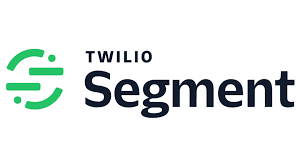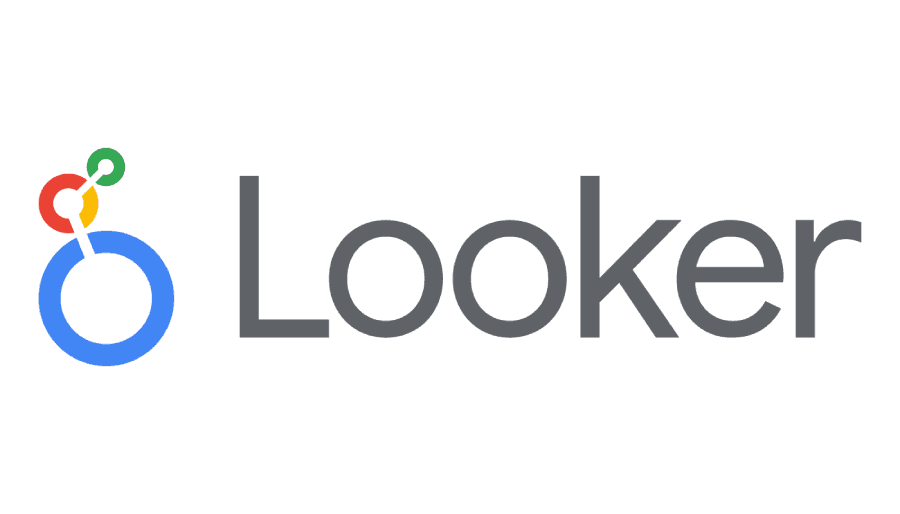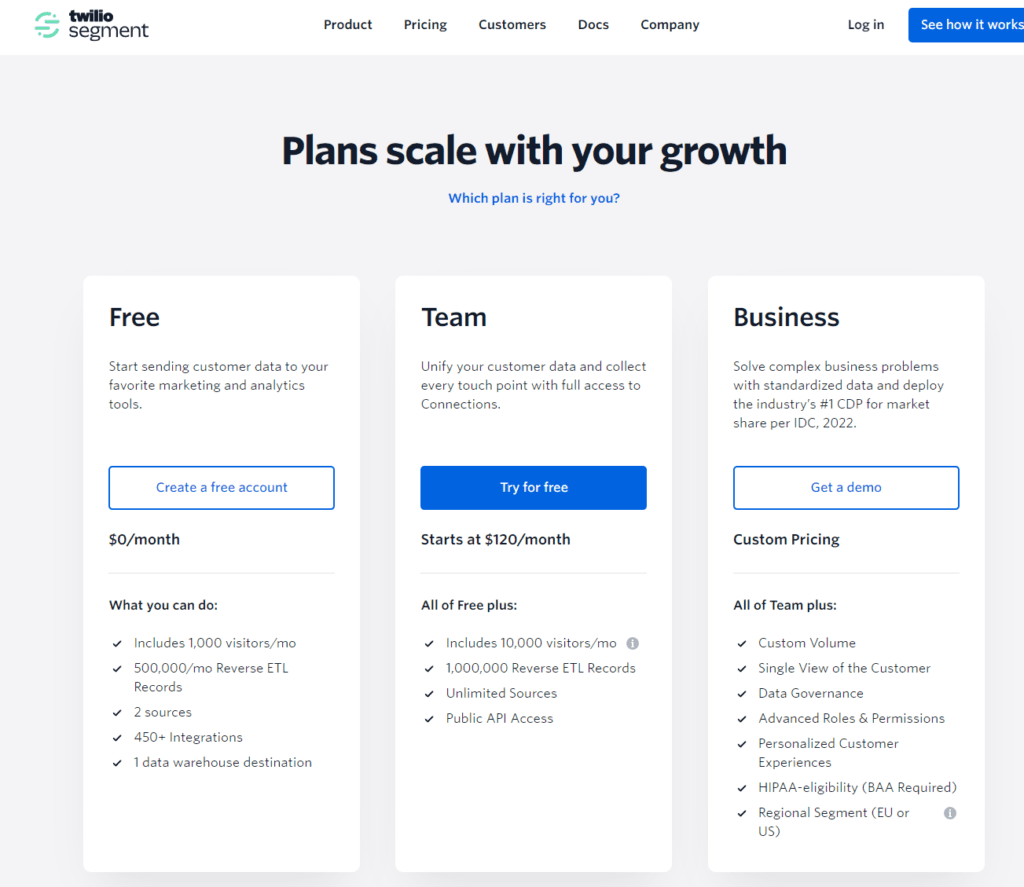In the digital age, where every interaction and transaction generates data, choosing the right analytics tool is pivotal for businesses aiming to navigate the vast sea of information effectively. Segment and Looker emerge as two leading lights in the analytics domain, offering distinct capabilities and insights designed to empower data-driven decision-making. While both tools aim to transform raw data into actionable insights, their approaches cater to different needs and operational scales. Whether you’re a burgeoning startup eager to understand your user base or a well-established enterprise looking to refine your data strategy, the choice between Segment and Looker could significantly influence your path to growth and success.
Segment | Looker |
|---|---|
| G2 Score – 4.6 out of 5 stars | G2 Score – 4.4 out of 5 stars |
| TrustRadius Score – 8.3/10 | TrustRadius Score – 8/10 |
Data Integration and Management
In the realm of analytics, the ability to seamlessly integrate various data sources and efficiently manage the collected information is crucial. It forms the foundation upon which all further analysis, insights, and strategic decisions are built.
Segment: The Centralized Data Hub
At its core, Segment operates as a powerful customer data platform (CDP) designed to collect, unify, and route data from multiple sources to various analytics and marketing tools. Its strength lies in its capacity to serve as the central hub for data collection, providing businesses with a single point of integration for gathering user data across websites, mobile apps, servers, and more. This centralized approach simplifies the data management process, ensuring consistency and reliability across all collected data points.
Segment’s platform excels in reducing complexity in data pipelines, offering businesses the ability to streamline their data collection methods and ensuring that data is accurately captured and ready for analysis. For organizations dealing with data from a multitude of touchpoints, Segment offers a scalable solution that grows with your data infrastructure needs.
Looker: Advanced Analytics and Data Exploration
Looker, on the other hand, positions itself as an advanced business intelligence (BI) tool, focusing on data analysis and exploration. It allows businesses to dig deeper into their data, providing powerful data visualization, reporting, and exploration capabilities. Looker’s approach to data integration revolves around its modeling layer, which enables users to define the relationships in their data, creating a single source of truth for analytics.
With Looker, the emphasis is on leveraging SQL to create detailed, customizable models that reflect the unique aspects of your business data. This capability allows for sophisticated analysis and the creation of dynamic dashboards and reports that can cater to a wide range of business questions and analytical needs. Looker’s strength lies in empowering businesses to extract meaningful insights through advanced data exploration tools and customizable analytics.
Data Management and Integration
In today’s digital landscape, where data is as vital as currency, choosing the right analytics tool can significantly impact your strategic decisions and operational efficiency. Segment and Looker stand out as two powerful platforms in the analytics toolbox, each with its strengths and focus areas. While Segment excels as a customer data platform (CDP), enabling businesses to collect, unify, and route data across their entire tech stack, Looker shines as a business intelligence (BI) tool that specializes in data exploration, reporting, and visualization. Understanding their differences in data management and integration is crucial for businesses aiming to harness their data’s full potential.
Segment: The Central Hub for Your Data
Segment operates on the principle of being the single source of truth for customer data. It excels in collecting data from various touchpoints, whether online or offline, and standardizing it into a cohesive format. This process ensures that regardless of the source, be it your website, mobile app, or third-party tools, all customer interactions are captured and funneled into a centralized hub.
One of Segment’s most significant advantages is its extensive network of integrations. With connections to over 300 tools for analytics, marketing, data warehousing, and more, Segment acts as the backbone of your data infrastructure, enabling seamless data flow across your entire tech stack. This capability allows businesses to not only collect and unify their data but also to easily route it to the tools that need it most, enhancing the effectiveness of their analytics, marketing, and customer service efforts.
Looker: Deep Insights Through Data Exploration
Looker takes a different approach, focusing on the exploration, analysis, and visualization of data. Built on top of your data warehouse, Looker allows businesses to dive deep into their data, creating detailed reports, dashboards, and visualizations that offer insights into various aspects of their operations. Its powerful modeling language, LookML, enables the creation of custom data models that serve as the basis for analysis, ensuring that businesses can tailor their exploration to meet their specific needs.
Integration also plays a critical role in Looker’s ecosystem, particularly regarding how it accesses and utilizes data stored in data warehouses like Google BigQuery, Amazon Redshift, and Snowflake. While not a CDP like Segment, Looker integrates with a range of business applications to enhance its reporting capabilities, pulling in data from these applications to enrich the analysis and offer a more comprehensive view of business performance.

Related: Check out our free SEO suite

Usability and Learning Curve
The user experience design of an analytics tool, along with the complexity involved in mastering its features, can significantly influence its effectiveness within an organization. Both Segment and Looker offer powerful capabilities, but their usability and the learning curve required to leverage those capabilities vary, reflecting their different focuses and intended user bases.
Segment: Designed for Operational Efficiency
Segment is built with the goal of simplifying data collection and integration across various tools and platforms. Its user interface is intuitive, designed to make the setup of data pipelines as straightforward as possible. This ease of setup and operation extends to its wide range of integrations, enabling teams with varied technical skills to efficiently manage data flows without deep technical expertise.
However, to fully leverage Segment’s potential, particularly when it comes to customizing data collection and implementing sophisticated data routing logic, a certain level of technical understanding is beneficial. While the initial setup and basic operations are user-friendly, maximizing Segment’s capabilities may require some investment in learning and experimentation, particularly for those looking to deeply customize their data infrastructure.
Looker: A Balance of Power and Accessibility
Looker, on the other hand, strikes a balance between offering deep data exploration capabilities and maintaining accessibility for users with different skill levels. Its interface is clean and user-focused, simplifying the process of creating reports and dashboards. Looker’s proprietary language, LookML, allows for the customization of data models and reports, catering to both simple and complex analysis needs.
The learning curve for Looker is steeper than that of basic analytics tools, primarily due to the power and flexibility it offers through LookML. Users looking to create highly customized reports and delve into advanced analytics will need to become familiar with LookML. However, Looker provides extensive documentation, tutorials, and community support to ease this learning process. For teams with a dedicated data analyst or those willing to invest in training, Looker’s capabilities can be fully harnessed to provide comprehensive insights.
Customization and Flexibility
Both Segment and Looker were designed with the understanding that no two businesses are exactly alike, each requiring a set of tools that can be tailored to their specific objectives and workflows.
Segment: Modular Flexibility for Diverse Tech Stacks
Segment’s architecture is fundamentally modular, providing a flexible foundation that allows businesses to construct a customized data infrastructure. Its strength lies in its ability to integrate seamlessly with an extensive array of tools and platforms, from analytics and marketing automation to data warehousing and customer success platforms. This interoperability enables organizations to tailor their tech stack to their precise needs, adding or swapping tools as their business evolves without disrupting the underlying data infrastructure.
The customization with Segment largely revolves around how data is collected, transformed, and routed to various endpoints. While this offers a high degree of operational flexibility, it requires a clear strategy and, occasionally, technical expertise to configure and maintain the data flows optimally.
Looker: Deep Customization through Data Modeling
Looker differentiates itself with its powerful data modeling layer, LookML, which allows users to define, transform, and extend their data in ways that align with their business logic and analysis needs. This approach not only enables deep customization of the data analysis process but also ensures consistency and reliability across reports and dashboards, even as underlying data sources change.
Looker’s flexibility extends to its visualization and reporting capabilities, offering users the ability to create a wide range of custom reports, dashboards, and data explorations. This level of customization is particularly valuable for businesses with complex reporting requirements or those that need to distill large volumes of data into actionable insights.
Data Governance and Security
Data governance involves the overall management of the availability, usability, integrity, and security of the data employed in an enterprise, while data security focuses on protecting digital data from unauthorized access and corruption throughout its lifecycle.
Segment: Robust Data Management with a Focus on Compliance
Segment places a strong emphasis on data governance and security, providing tools and features designed to help businesses manage and protect their data effectively. It offers detailed control over data access and sharing, allowing organizations to enforce data governance policies directly within the platform. Segment’s commitment to compliance with global data protection regulations, such as GDPR and CCPA, further enhances its appeal to businesses that operate in multiple jurisdictions or handle sensitive customer information.
Moreover, Segment facilitates secure data collection and transfer, employing encryption and other security measures to safeguard data as it moves between sources and destinations. This focus on data security not only helps businesses protect their customer data but also supports compliance with industry standards and regulations.
Looker: Comprehensive Security within a Business Intelligence Context
Looker, with its deep integration into the Google Cloud Platform, inherits a robust security model that covers data storage, access, and processing. The platform offers fine-grained access controls, allowing administrators to define specific roles and permissions for users, ensuring that sensitive data is only accessible to authorized personnel. Like Segment, Looker is designed to comply with major data protection regulations, offering features that help businesses adhere to GDPR, CCPA, and other privacy standards.
Looker’s approach to data governance extends into its data modeling capabilities, where the structure and relationships of data can be defined and managed to ensure consistency and accuracy across reports and analyses. This level of governance supports not just security and compliance but also the integrity and reliability of business insights derived from the data.
Pricing
Segment:

Looker:

Conclusion
In wrapping up the comparison between Segment and Looker, it’s evident that both platforms offer distinct advantages tailored to different organizational needs and strategies. Segment excels as a customer data platform, offering robust data integration and management capabilities that are ideal for businesses looking to unify and streamline their data across a diverse tech stack. Its focus on data governance and security also makes it a compelling choice for organizations prioritizing compliance and data protection.
On the other hand, Looker shines in the realm of business intelligence, providing deep data exploration, reporting, and visualization tools. It stands out for businesses seeking to derive actionable insights through customized data analysis and reporting, backed by strong data governance and security features inherited from its integration with the Google Cloud Platform.
Read Next:
- GetResponse vs Zoho Campaigns: The Best Email Marketing Tool for 2024
- AWeber vs ActiveCampaign: The Best Email Marketing Tool
- Constant Contact vs Campaigner: Best Email Marketing Tool
- GetResponse vs Omnisend: The Best Email Marketing Tool for 2024
- AWeber vs Benchmark Email: The Best Email Marketing Tool





















